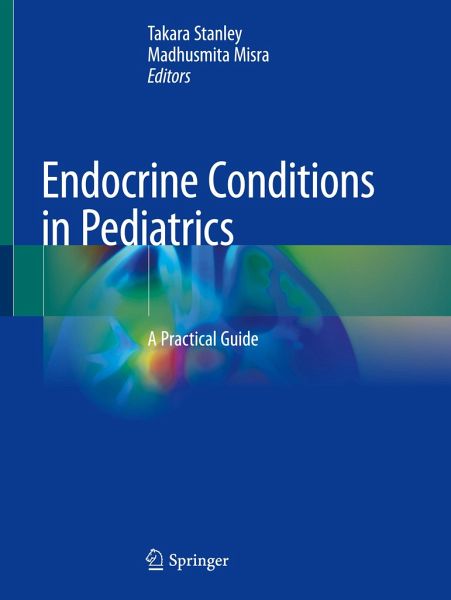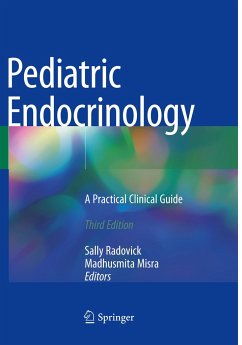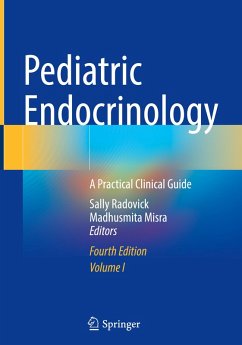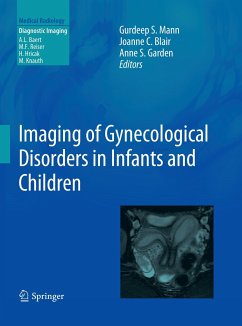
Endocrine Conditions in Pediatrics
A Practical Guide
Herausgegeben: Stanley, Takara; Misra, Madhusmita

PAYBACK Punkte
49 °P sammeln!
This book is aimed at primary care providers who care for the pediatric age group (general pediatrician, the PCP working with pediatric patients, and family medicine providers) with the goal of covering the endocrine differential diagnosis of common signs and symptoms of possible endocrine disease as well as appropriate initial laboratory evaluation and interpretation.While multiple pediatric endocrine textbooks exist, most of them are heavy in coverage of physiology and rare diseases, with less discussion of practical steps in evaluation and diagnosis. This book distinguishes itself through a...
This book is aimed at primary care providers who care for the pediatric age group (general pediatrician, the PCP working with pediatric patients, and family medicine providers) with the goal of covering the endocrine differential diagnosis of common signs and symptoms of possible endocrine disease as well as appropriate initial laboratory evaluation and interpretation.
While multiple pediatric endocrine textbooks exist, most of them are heavy in coverage of physiology and rare diseases, with less discussion of practical steps in evaluation and diagnosis. This book distinguishes itself through a very practical approach. The first section is organized by presenting signs and symptoms, the second section is organized by laboratory interpretation, and the third section provides summaries of common pediatric endocrine disorders. Chapters are concise, providing critical clinical information including clinical pearls, common diagnoses and important points inpatient counseling.
Written by experts in the field, Endocrine Conditions in Pediatrics is a valuable resource that provides general pediatricians and other primary care providers with all of the information they need to provide superb patient care before transferring to a pediatric endocrinologist when necessary.
While multiple pediatric endocrine textbooks exist, most of them are heavy in coverage of physiology and rare diseases, with less discussion of practical steps in evaluation and diagnosis. This book distinguishes itself through a very practical approach. The first section is organized by presenting signs and symptoms, the second section is organized by laboratory interpretation, and the third section provides summaries of common pediatric endocrine disorders. Chapters are concise, providing critical clinical information including clinical pearls, common diagnoses and important points inpatient counseling.
Written by experts in the field, Endocrine Conditions in Pediatrics is a valuable resource that provides general pediatricians and other primary care providers with all of the information they need to provide superb patient care before transferring to a pediatric endocrinologist when necessary.












